Top Ranked New Cars in Initial Quality by Vehicle Class

This year’s JD Power Initial Quality Study had a few surprises and you might be shocked to hear which vehicles were most problem free.
Of the 207 models covered in the annual survey, the Porsche Panamera had the least reported problems. Coming in second place? The surprising Hyundai Accent. So which vehicles were best in their segment? AutoGuide.com has compiled a list of all the top ranked new cars from this year’s Initial Quality Study.
As previously mentioned, the Hyundai Accent was the second most problem-free vehicle from this year’s study. As a result, it was the highest ranked in the Small Car category with the Mazda2 coming in second place and the Kia Rio in third. The Hyundai Accent comes standard with a 1.6-liter four-cylinder engine with 138 hp while getting 27 mpg in the city and 38 mpg on the highway with a manual transmission. The Accent received an overall crash-test rating of four stars (out of five) from NHTSA.
Topping the Compact Car category this year was the Hyundai Elantra, with the Toyota Corolla coming in second place and the Honda Civic ranking third. The compact Elantra comes standard with a 1.8-liter four-cylinder engine sporting 145 hp but a more powerful 2.0-liter is available with 173 hp. The standard 1.8-liter engine gets 27 mpg in the city and 37 mpg on the highway while the larger engine provides 24 mpg in the city and 34 mpg on the highway. Both the Elantra sedan and GT hatchback received a five-star overall safety rating from NHTSA. The coupe version has not yet been tested.
In the Compact Premium Car segment, the Lexus ES took top honors with the Acura TL coming in second. Tied for third place was the Acura ILX and the BMW 4 Series. In the U.S., two versions of the Lexus ES are available: ES 350 and ES 300h. The ES 350 is powered by a 3.5-liter V6 with 268 hp while the ES 300h hybrid has a 2.5-liter four-cylinder engine paired to an electric motor for a total system output of 200 hp. According to the EPA, the ES 300h returns 40 mpg in the city and 39 mpg on the highway while the ES 350 nets 21 mpg in the city and 31 mpg on the highway. The Lexus ES has received a five-star overall safety rating from NHTSA.
In the Compact Sporty Car segment is one of America’s favorites: the Mazda MX-5 Miata. The Volkswagen GTI followed in second while the Scion tC was ranked third. Under the hood of the sporty Miata is a 2.0-liter four-cylinder engine with 167 hp that’s good for 22 mpg in the city and 28 mpg on the highway.
Leading the way in the Compact Premium Sporty Car segment was the Porsche Boxster while its stablemate, the Cayman, came in second. The Nissan Z was ranked third in the category. The two-passenger, rear-wheel-drive convertible comes with a 2.7-liter six-cylinder engine as standard with 265 hp and 206 lb-ft of torque. The Boxster S features a 3.4-liter six-cylinder with 315 hp and 266 lb-ft of torque and can accelerate to 60 mph in 4.5 seconds. Equipped with a standard auto start-stop system, the Boxster gets a 22 mpg city, 32 mpg highway rating. The more powerful Boxster S isn’t too shabby in the fuel efficiency department either, getting 21 mpg in the city and 30 mpg on the highway.
As for the Midsize Car segment, the Chevrolet Malibu led the Initial Quality Study, while the Hyundai Sonata came in second and the Toyota Camry captured a surprising third place. Standard on the Chevrolet Malibu is a 2.5-liter four-cylinder engine with 196 hp while a turbocharged, 2.0-liter four-cylinder is available with 259 hp and 295 lb-ft of torque. The standard powerplant returns 25 mpg in the city and 36 mpg on the highway while the turbo engine gets 21 mpg in the city and 30 mpg on the highway. The Malibu has received a five-star overall safety rating from NHTSA.
The Dodge Challenger ranked highest among the Midsize Sporty Car category with the Chevrolet Camaro following in second place. The entry-level Challenger sports the American automaker’s 3.6-liter V6 powerplant with 305 hp and 268 lb-ft of torque. The more powerful Challenger R/T has a 5.7-liter HEMI V8 under the hood with 372 hp and 400 lb-ft of torque or when mated to a manual transmission, gets 375 hp and 410 lb-ft of torque. Those that are really hungry for performance can go with the Challenger SRT which is powered by a 6.4-liter V8 with 470 hp and 470 lb-ft of torque. Fuel economy for the 3.6-liter V6 engine comes in at 18 mpg in the city and 27 mpg on the highway while the 5.7-liter V8 gets 15 mpg in the city and 23 mpg on the highway with a manual transmission – the automatic is good for 25 mpg on the highway. As for the 6.4-liter V8, expect 14 mpg in the city and 23 mpg on the highway. NHTSA has awarded the Challenger a five-star overall safety rating.
Yet another Hyundai vehicle leading its segment was the Genesis sedan for the Midsize Premium Car class. Coming in second place was the Lincoln MKS, while the Lexus GS and the Mercedes-Benz CLS-Class tied for third place. The luxury sedan comes standard with a 3.8-liter V6 with 333 hp and an eight-speed automatic transmission that returns 18 mpg in the city and 27 mpg on the highway. Also available is a more powerful 5.0-liter V8 with 429 hp that gets 18 mpg in the city and 27 mpg on the highway.
Porsche also claimed top honors in the Midsize Premium Sporty Car segment with its popular 911 model. Following in its footsteps was the Jaguar F-Type. There’s no confusing the 911 with any other sports car in the world, a nameplate that has been carrying the tradition of Porsche for decades. The latest iteration has a plethora of models to choose from with the 911 Carrera powered by a 3.4-liter six-cylinder engine with 350 hp and 287 lb-ft of torque. There is of course the 911 Turbo that comes with 520 hp and 487 lb-ft of torque, but if that doesn’t satisfy you, the Turbo S provides 560 hp and 516 lb-ft of torque. Fuel economy across the various 911 models range from 15 mpg in the city (GT3) to 19 mpg in the city (Carrera) and 20 mpg on the highway (GT3) to 27 mpg (Carrera). The Turbo and Turbo S gets a respectable 17 mpg in the city and 24 mpg on the highway.
In the Large Car category, the Kia Cadenza ranked highest, besting the Nissan Maxima and the Toyota Avalon. A new full-size sedan from the Korean automaker, the Cadenza comes equipped with a 3.3-liter V6 providing 293 hp and 255 lb-ft of torque. According to the EPA, the Kia Cadenza is good for 19 mpg in the city and 28 mpg on the highway. Standard equipment on the Cadenza include 18-inch wheels, automatic headlights, fog lights, heated power-folding side mirrors with LED turn signal indicators and rain-sensing wipers.
The vehicle with the single-lowest number of problems in this year’s Initial Quality Study was the Porsche Panamera, which also took best-in-category for the Large Premium Car segment. Coming in second place was the Lexus LS while the Hyundai Equus was ranked third. Like other Porsche models, the Panamera has a full lineup ranging from a 310-hp 3.6-liter V6 to a 570-hp 4.8-liter turbocharged V8. Though it’s a sedan, the Panamera fully embraces Porsche’s motto of performance first and offers a sporty driving experience. Fuel economy ranges from 15 mpg in the city on the low end to 18 mpg while highway consumption ranges from 24 mpg to 28 mpg, depending on the engine.
The Small SUV category actually had a three-way tie for highest ranked between the Buick Encore, Kia Sportage and Nissan Juke. The Nissan Juke (seen above) comes standard with a 1.6-liter four-cylinder engine with 188 hp and 177 lb-ft of torque. There is also the high-performance Juke NISMO model that delivers 197 hp and 184 lb-ft of torque. The Buick Encore on the other hand, comes standard with a 1.4-liter four-cylinder with 138 hp and 148 lb-ft of torque. As for the Kia Sportage, under the hood of the Korean automaker’s compact SUV is a 2.4-liter four-cylinder engine with 182 hp and 177 lb-ft of torque. Also available is a turbocharged 2.0-liter four-cylinder with 260 hp and 269 lb-ft of torque.
In the Compact SUV category, the highest ranked vehicle was the GMC Terrain, followed by the Chevrolet Equinox and the Toyota FJ Cruiser. The GMC Terrain is a five-passenger crossover that comes standard with a 2.4-liter four-cylinder engine with 182 hp and 172 lb-ft of torque. Those looking for more muscle can opt for a 3.6-liter V6 producing 301 hp and 272 lb-ft of torque. The four-cylinder Terrain gets 22 mpg in the city and 32 mpg on the highway in front-wheel drive form while the six-cylinder provides 20 mpg in the city and 29 mpg on the highway.
Leading the way in the Compact Premium SUV segment is the Infiniti QX50, followed by the BMW X3 and the Audi Q5. Formerly known as the Infiniti EX, the QX50 is available in two models: base and Journey. Powering the QX50 is a 3.7-liter V6 engine with 325 hp and 267 lb-ft of torque mated to a seven-speed automatic transmission. Both models of the QX50 gets 17 mpg in the city and 25 mpg on the highway. The 2014 QX50 comes standard with four-wheel anti-lock brakes with brake assist and electronic brake-force distribution, six air bags, rearview camera and front active head restraints.
In the Compact MPV category, the Mazda5 ranked highest, with the Kia Soul following in second and the Ford C-Max grabbing a third place finish. The multi-purpose vehicles category is a strange one, but the Mazda5 impresses with a 2.5-liter four-cylinder engine with 157 hp and a six-speed manual transmission. Though its styling is outdated, the model is expected to receive an update to benefit from the brand’s design language that is prevalent on the new Mazda3 and Mazda6. As for fuel economy, expect the Mazda5 to get 21 mpg in the city and 28 mpg on the highway with a manual transmission, while the automatic does slightly better at 22 mpg in the city.
The Ford Edge received top honors in the Midsize SUV category while the Hyundai Santa Fe and the Nissan Murano tied for second place. A midsize crossover SUV with seating for five, the Ford Edge comes standard with a 3.5-liter V6 engine generating 285 hp and 253 lb-ft of torque. A more fuel-efficient, 2.0-liter EcoBoost turbocharged four-cylinder engine is available with 240 hp and 270 lb-ft of torque. All-wheel drive is only available on the V6 engine. There is also a more powerful 3.7-liter V6 on the Ford Edge Sport that generates 305 hp and 280 lb-ft of torque. With the EcoBoost engine, the Edge gets 21 mpg in the city and 30 mpg on the highway while the standard V6 nets 19 mpg in the city and 27 mpg on the highway. The 3.7-liter V6 doesn’t suffer too greatly with the added performance, getting an 18 mpg city, 26 mpg highway rating.
The Midsize Premium SUV category was led by the Lincoln MKX, which reported less problems than the Porsche Cayenne which finished second. In third place was the Infiniti QX70. Standard features on the Lincoln MKX include a 3.7-liter V6 engine with 305 hp and a six-speed automatic transmission, netting 17 mpg in the city and 23 mpg on the highway. Safety features include four-wheel anti-lock brakes, side-seat mounted airbags, Safety Canopy System curtain first and second row overhead airbags and airbag occupancy sensor.
In the Midsize Pickup category, the Honda Ridgeline beat out the Nissan Frontier and the Toyota Tacoma, which both tied for second place. Powering the Honda Ridgeline is a 3.5-liter V6 with 250 hp and a five-speed automatic transmission. The V6 allows the Ridgeline to return 15 mpg in the city and 21 mpg on the highway. The Honda Ridgeline comes standard with four-wheel anti-lock brakes, side-seat mounted airbags, curtain first and second row overhead airbags, ABS and driveline traction control and four-wheel drive.
Highest ranked in the Minivan category was the Chrysler Town & Country, while the Toyota Sienna came in second and the Dodge Grand Caravan was third. Even though rumors of the Town & Country’s demise have been spreading over the last few years, the model will live on. Powered by the American automaker’s popular 3.6-liter V6 engine, the Town & Country makes 283 hp while getting 17 mpg in the city and 25 mpg on the highway. The 2014 Town & Country received an overall rating of four stars out of five from NHTSA.
The Large SUV category saw a tie between the Chevrolet Suburban and GMC Yukon for first place, while the Chevrolet Tahoe came in second. The full-size, body-on-frame SUV is capable of accommodating up to nine occupants while its 5.3-liter V8 engine provides 320 hp and 335 lb-ft of torque when the fuel tank is filled with regular-grade gasoline or 326 hp and 348 lb-ft of torque when it’s burning E85. Fuel economy is rated at 15 mpg in the city and 21 mpg on the highway for the full-size SUV. NHTSA gave the Suburban a four-star out of five overall safety rating.
Another grab for Infiniti was in the Large Premium SUV category, with the QX80 taking highest ranked. Following the QX80 in the Initial Quality Study rankings was the Cadillac Escalade. The QX80 luxury SUV features a 5.6-liter V8 under the hood with 400 hp and 413 lb-ft of torque that is mated to a seven-speed automatic transmission. T0wing capacity is am impressive 8,500 lbs and standard key features on the full-size SUV include Bose 13-speaker premium audio system, Tri-Zone automatic temperature control system, moonroof, Around View Monitor and the Infiniti Hard Drive Navigation System.
Covering the Large Light Duty Pickup category was the Ford F-150 while the Toyota Tundra ranked second and the Ram 1500 ranked third. Though the 2014 Ford F-150 is “old news” with the introduction of the aluminum 2015 F-150, the 2014 model year is still available at dealerships. Standard on the 2014 F-150 is a 3.7-liter V6 with 302 hp that gets 17 mpg in the city and 23 mpg on the highway, while a 3.5-liter EcoBoost V6 provides 365 hp and 16 mpg in the city and 22 mpg on the highway. V8 lovers can opt for the 5.0-liter with 360 hp that gets a 15 mpg city, 21 mpg highway rating. Lastly, there’s the SVT Raptor model that is powered by a 6.2-liter V8 with 411 hp that gets 11 mpg in the city and 16 mpg on the highway.
Lastly was the Chevrolet Silverado HD, which ranked highest in the Large Heavy Duty Pickup category. Coming in second was the GMC Sierra HD – almost no surprise considering they’re stablemates. The 2014 Chevrolet Silverado HD has bee redesigned with improved aerodynamics, practicality, horsepower, torque, towing capacity and more. A new 4.3-liter V6 is standard with 285 hp and 305 lb-ft of torque and can tow up to 7,200 lbs. The 5.3-liter V8 provides 355 hp and 383 lb-ft of torque and can handle up to 11,500 lbs of trailer weight. The most powerful engine in the lineup is a 6.2-liter V8 with 420 hp and 450 lb-ft of torque. The smaller V6 engine will return up to 24 mpg on the highway while the V8s will range from 16 mpg in the city and 23 mpg on the highway.

Jason Siu began his career in automotive journalism in 2003 with Modified Magazine, a property previously held by VerticalScope. As the West Coast Editor, he played a pivotal role while also extending his expertise to Modified Luxury & Exotics and Modified Mustangs. Beyond his editorial work, Jason authored two notable Cartech books. His tenure at AutoGuide.com saw him immersed in the daily news cycle, yet his passion for hands-on evaluation led him to focus on testing and product reviews, offering well-rounded recommendations to AutoGuide readers. Currently, as the Content Director for VerticalScope, Jason spearheads the content strategy for an array of online publications, a role that has him at the helm of ensuring quality and consistency across the board.
More by Jason Siu



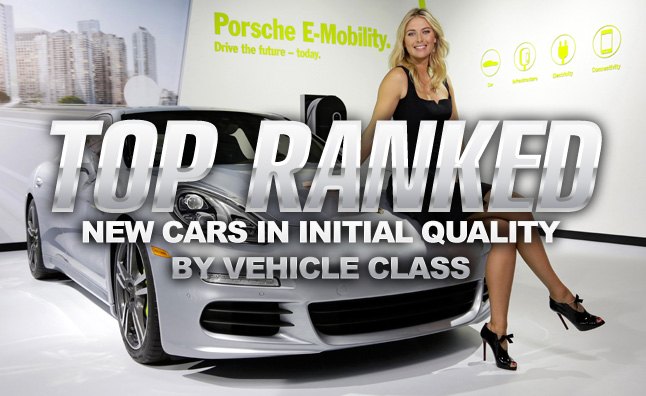































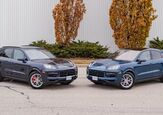
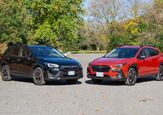
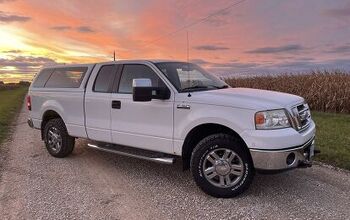
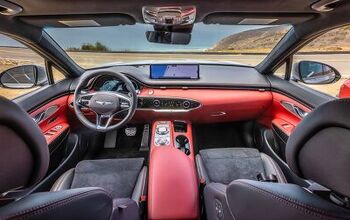
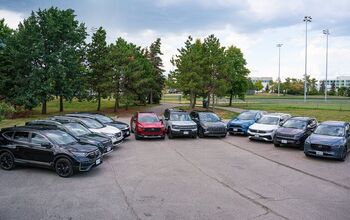









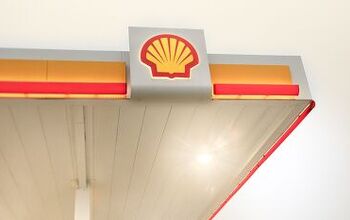





Comments
Join the conversation
From my past observation, J.D. Power is a very dubious and manipulative auto research company. It seems any automaker can pay the company for better publicity in a timely J.D. Power study report. Yeah, J.D. Power uses data from consumers, but how does it get the data, how does it process the data, and is its data subject to public auditing ? No one knows, except J. D. Power itself , because J.D. Power owns and operates its Secret Magic Black Data Box Machine in the name of scientific data-based research.
Consumer Reports is a much more reliable source for information. http://www.consumerreports.org/cro/index.htm